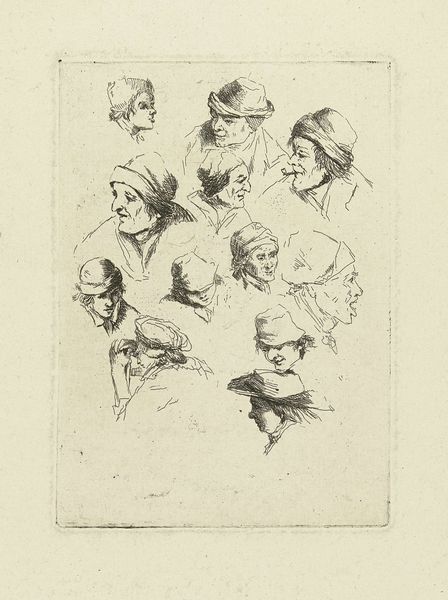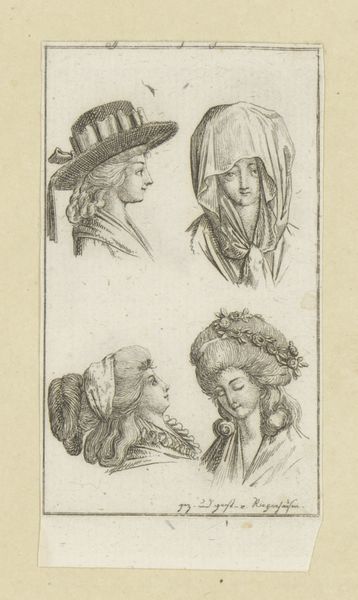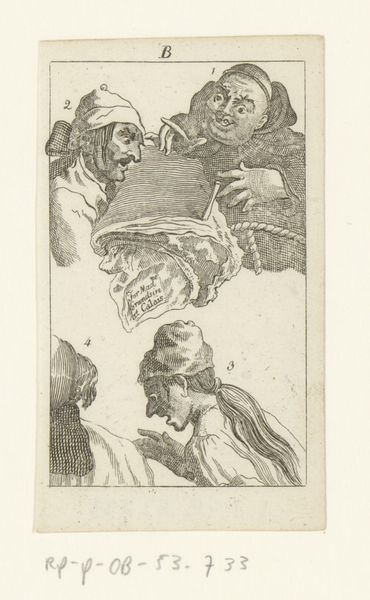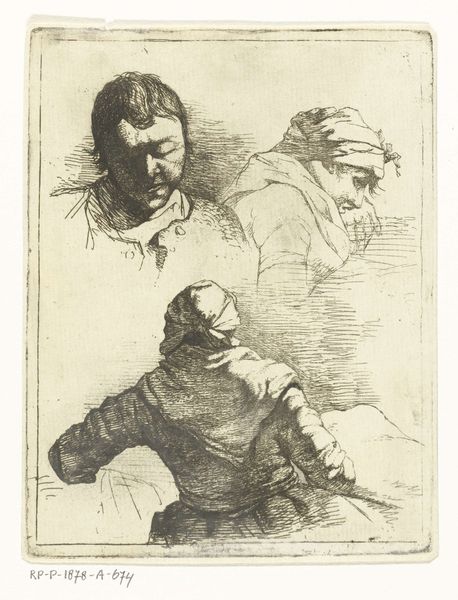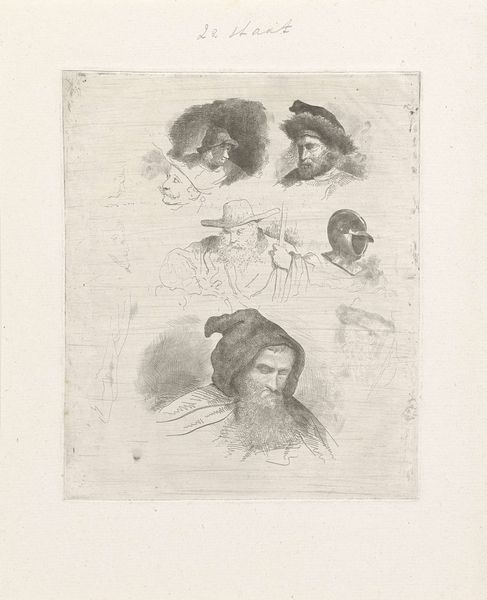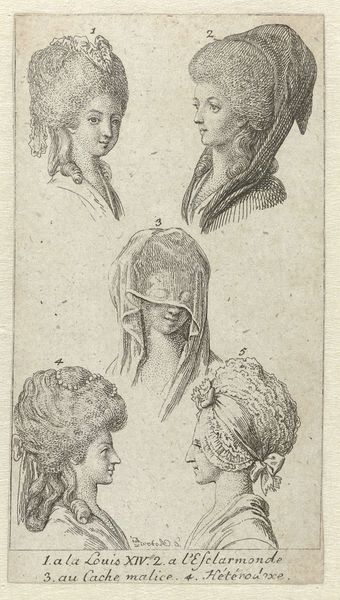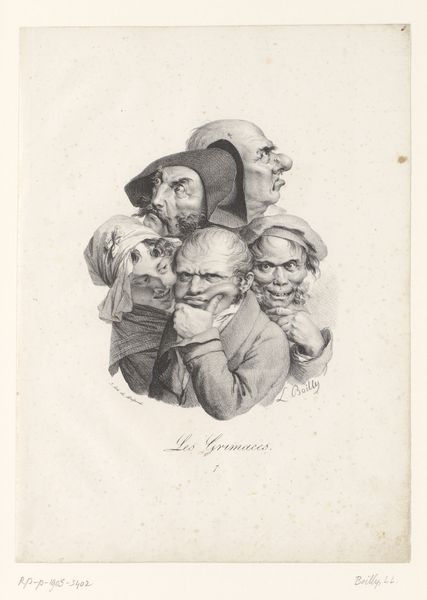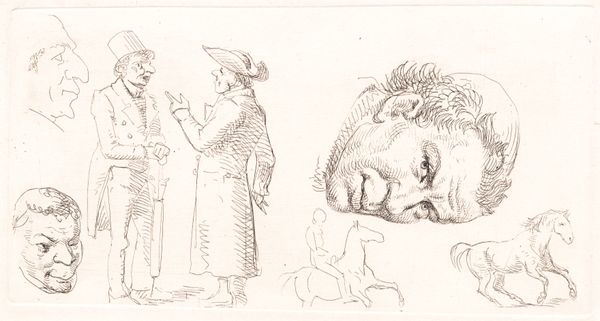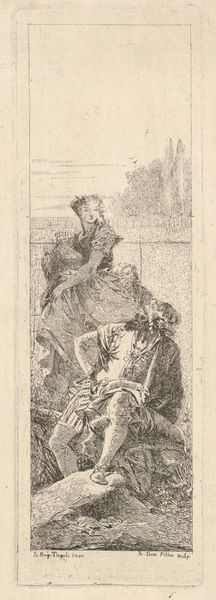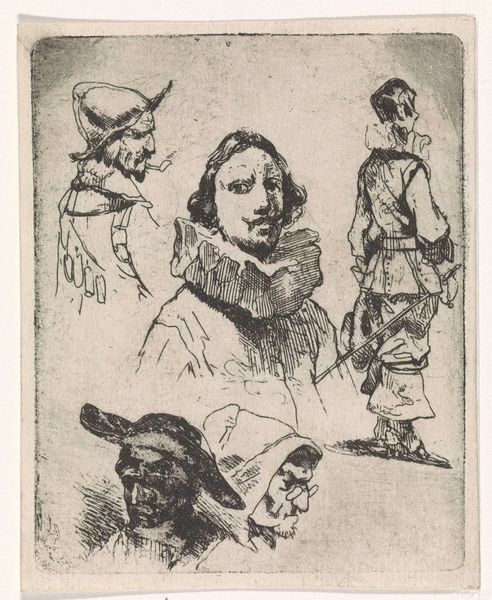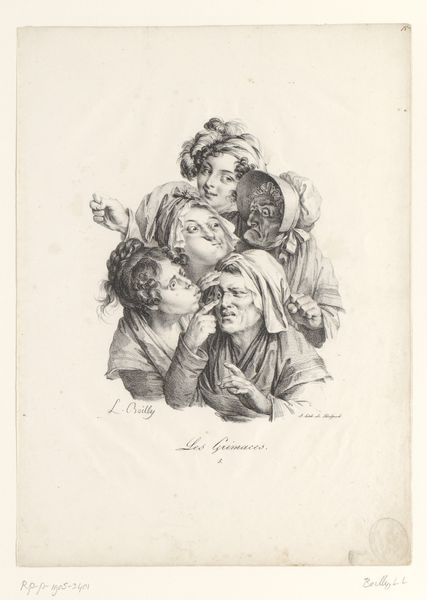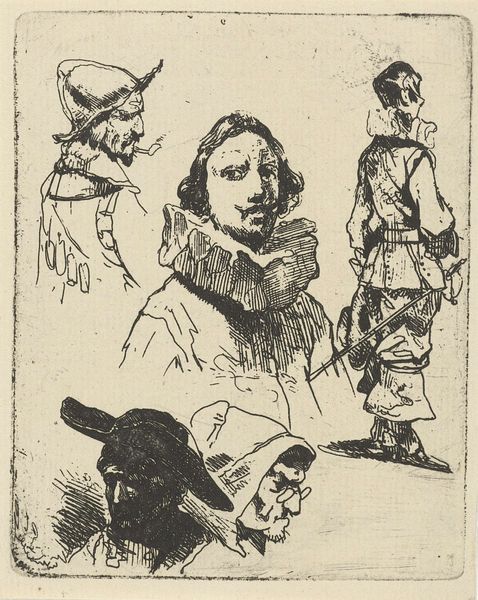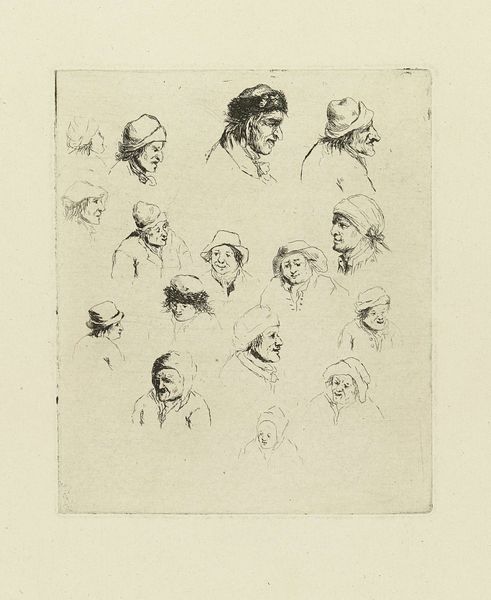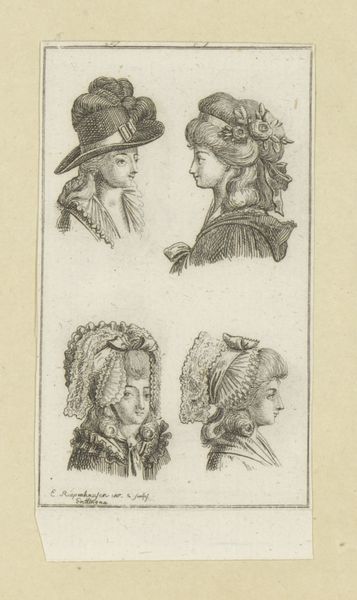
drawing, print, etching
#
portrait
#
pencil drawn
#
drawing
# print
#
etching
#
old engraving style
#
pencil drawing
#
romanticism
#
pen-ink sketch
#
genre-painting
#
history-painting
#
academic-art
Dimensions: height 102 mm, width 58 mm
Copyright: Rijks Museum: Open Domain
Curator: The first thing I notice is the striking use of line, a very active application that lends a restless energy to this print. Editor: Indeed, Ernst Ludwig Riepenhausen’s “Four Mutilated Men,” created between 1775 and 1840, presents a tableau of striking visual and emotional dissonance. Curator: Dissonance is the word! Look at the ways the hatching creates these almost vibrating tonal contrasts. Is this Romanticism wrestling with the Enlightenment? Editor: I see more of the enduring themes of human vulnerability and societal critique, reminiscent of Goya, in how the disfigured figures invite reflection on human frailty and social injustices of the time. Consider the period, poised between the waning Enlightenment and the rise of Romanticism. The imagery encapsulates this very tension. Curator: I am captivated by how the individual figures convey psychological states. The bandaged head and distorted faces, almost grotesque. Is the artist trying to tap into a universal symbol of suffering? Editor: It transcends the immediate grotesque, doesn't it? Riepenhausen captures a collective memory of human struggle. The figures become icons, embodiments of pain. And what do you make of the specific act of mutilation being emphasized? Is there an allusion to the power dynamics that physically mark the disenfranchised? Curator: The composition directs us to read from top to bottom. Are the men displayed in descending order of injury, as if cataloged? Perhaps these depictions reference classical portraiture conventions ironically—where nobility gives way to the harsh realities of common life? Editor: A very astute reading. In this way, it is the perfect emblem of the Romantic artist confronting harsh truths about human experience. It's almost as if the artist demands we acknowledge this dark underbelly that art often conveniently forgets. Curator: Yes, the piece is challenging in its frankness and ultimately deeply poignant. I’m left considering how visual narratives affect the encoding and encoding of historical trauma. Editor: For me, its strength lies in its compositional integrity – the stark contrast, meticulous linework that amplify its emotional power. It remains a potent visual meditation on human suffering.
Comments
No comments
Be the first to comment and join the conversation on the ultimate creative platform.
